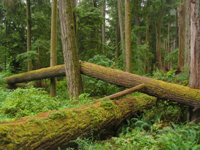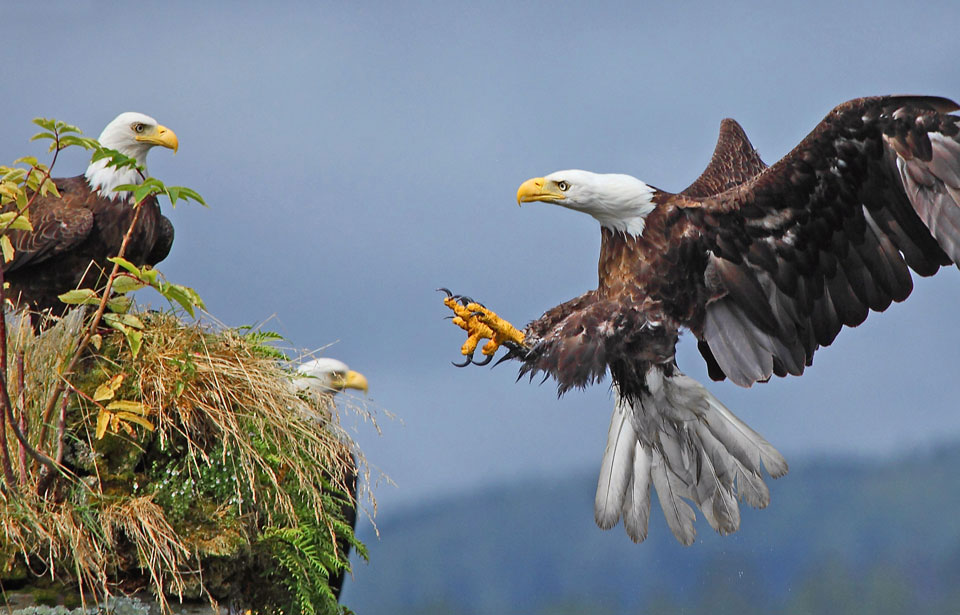 |
A fallen tree may support more life than a living one, for decaying wood is a biological legacy — a link between past and future forests. It recycles critical nutrients back into the soil and serves as the foundation of a rich and complex food web: bacteria, fungi, and wood-boring insects like termites and carpenter ants consume the rotting wood; they, in turn, become food for squirrels, shrews, salamanders, and centipedes, which nourish such predators as weasels and owls. Dead wood also shelters a multitude of shoreline species: loose bark and cracks supply safe hiding places for skinks, voles, and chipmunks; juncos nest around exposed roots; deer mice cache food in cavities; grouse use downed trees as drumming sites; and hollow logs provide lodgings for bears and raccoons, breeding sites for martens and porcupines, and cover for deer and winter wrens.
Snags are the monarchs of the dead wood realm, with such shoreline birds as eagles, ospreys, great horned owls, ravens, and herons nesting in their crowns, woodpeckers excavating their trunks, chickadees, flying squirrels, and wood ducks nesting in their cavities, and bats and wood frogs sheltering underneath their bark.
Let trees in each stage of birth, growth, death, decay, and renewal fulfil their roles. About 10 or 12 snags should remain per hectare in a buffer zone, along with coarse woody debris in a variety of species, sizes, and stages of decay scattered throughout. (Note that trees infected with Dutch elm disease can infect healthy elms and should not remain standing.) Boost the wildlife value of snag trees by planting vines like bittersweet, grape, or Virginia creeper at the snag’s base.



